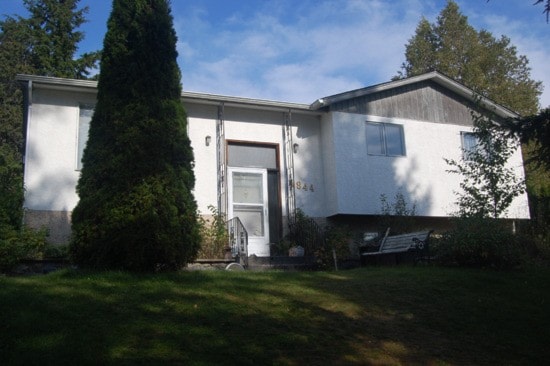A HOUSE described as a haven for crack dealing and other illegal activity was emptied last week in what police are saying is a joint effort between themselves and neighbours.
“The house did definitely come to our attention through the neighbourhood,” said Cpl. Mike Dame, officer in charge of the Crime Reduction Unit and General Investigation Section of Terrace RCMP, of a rental residence on the 4800 Block of Sunset on the southside.
“I love neighbourhood involvement. It’s the absolute cream of the crop way to deal with these issues.”
Many Crime Stoppers tips, which described the operations of a flop house also operating as a place at which crack cocaine was sold led police to the residence.
Police had asked neighbours to report all suspicious occurrences and illegal activity, had talked to the owner of the residence and officers were persistent in enforcing municipal bylaws, said police.
“The community definitely controls what happens within the community,” said Dame. “In a small tight-knit neighbourhood, if [drug dealers are] identified, it makes it harder for them to operate.”
Dame said police officers consistently stopped at the residence.
“When something like that happens, it’s just a constant pressure,” said Dame. For example, officers would drive by, look for who’s coming and going at the residence and check on them, he added.
Every aspect of enforcement is considered such as the Controlled Drugs and Substances Act, the criminal code, provincial and municipal bylaws, he said.
Officers not only went door to door in the neighbourhood to ask people to report on suspicious behaviour, they also went to the residence to talk to the people there too, said Dame.
“The members would be having a chat [with the residents] after talking with the neighbours,” said Dame.
“The support of the public on this makes all the difference because if they’re calling us, then we get information to at least address the problem one way or another,” said Dame.
Indicators of a problem residence include vehicles arriving and leaving with their lights off, unkempt, disoriented or paranoid-acting visitors and increased crime in the neighbourhood.
Seeing only one of these indicators doesn’t mean a residence is a drug house – there needs to be several.
“None by themselves, but if you take a look at that list and ‘wow, all of that stuff is going on’, yeah you should be calling us to let us know,” said Dame.
Police surveillance leading to the identification of visitors would then give officers a picture of what’s going on.
“Your house is yours, your neighbourhood is yours, your community is yours. Make sure you own it,” said Dame. “We really want people to be proud of their neighbourhoods.”
Certain activities are common at many drug/flop houses and together, create suspicion that warrants further investigation. The indicators people can look out for include:
• Vehicles stopping for short stays of 15 minutes or less, just long enough for someone to go in and make a drug buy.
• A large number of visitors over short periods of time.
• Cars left running with someone in the car while another runs inside.
• At night, cars arrive and leave with lights off.
• The house has different characteristics when traffic picks up, such as a new light is turned on – some kind of signal that drugs are available.
• Vehicles speeding to and from house.
• Loud voices and shouting that may include comments about drugs.
• People parking away from the house and walking in.
• Unkempt, disoriented or paranoid-acting visitors.
• Accumulations of trash or junk.
• Deterioration / neglect of the house, yard and surrounding property.
• Occupants have diminished hygiene.
• Occupants never leave / don’t work.
• Occupant is awake or sleeps for days at a time.
• Children not being watched / cared for / not going to school.
• Lots of young visitors, especially when the occupants do not have children of that age group.
• Avoids contact with or is hostile towards neighbors.
• Increased crime in the neighborhood, especially crimes of opportunity like vehicle thefts, thefts from vehicles, criminal mischief and burglaries.
• Other neighbors exhibiting unusual behavior, frequenting the drug house, defending the occupants’ behavior or acting as lookouts.
